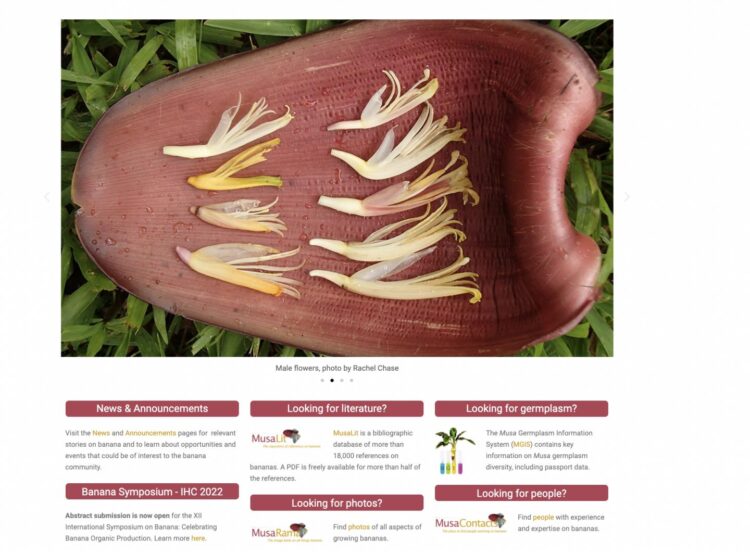The Alliance-managed website MusaNet collects and shares global resources on banana (Musa) across the whole value chain – from collecting germplasm to post-harvest qualities
The Musa genus, which includes over 70 species and around 1,000 cultivars of bananas, represents a globally important source of food and livelihoods. In the face of rampant diseases and monoculture farming, it is imperative that researchers, crop breeders, and growers work together now more than ever before to conserve Musa diversity.
MusaNet, the global collaborative network for Musa-related research, was created in 2011 to implement the Global Musa Strategy established with the banana research community. MusaNet is excited to announce the launch of a new website that collects and shares information on all aspects of banana, be it diversity, conservation or current threats.
“With our new site, you can find all relevant information on people, projects, meetings, collections, publications and news on banana under one portal,” explains MusaNet coordinator and Alliance senior scientist Nicolas Roux. “Users can also easily request or send germplasm, access its related information and find out how to send samples for genotyping”.
The site hosts an extensive database, MusaLit, of more than 18,000 published references on bananas and MusaRama, an image bank of photos of all aspects of bananas. MusaContacts enables users to search for and connect with a wide range of specialists who have experience and expertise on bananas. “Importantly, the new site hosts all three regional networks – MusaLAC, MusAfrica and BAPNET (representing Latin America, Africa, and Asia and the Pacific), which were previously hosted in separate locations,” says Roux. “This change aims to better connect experts and researchers around the world for the conservation, characterization and documentation of Musa diversity.”
The website contains information on all the major banana collections of the world and is closely linked to the Musa Germplasm Information System, which offers key information on germplasm diversity, including passport data of many of these collections, including the Alliance banana genebank – the International Musa Germplasm Transit Centre (ITC).
Site users can also find information on projects such as iNaturalist – a geo-location knowledge base of wild and cultivated banana diversity – and MusaID – a taxonomy decision-making application that helps users identify unknown species by comparison of a reference collection. The site also keeps users up to date with relevant workshops and meetings.
Associate Scientist Rachel Chase adds, “MusaNet members and the world at large can now get more information in one convenient location – the banana research community is small but very active, so it is nice to bring the different parts together”.
MusaNet is a collaboration between the Alliance of Bioversity International and CIAT, CGIAR Research Program on Roots, Tubers and Bananas (RTB), BAPNET, MusaLAC and MusAFRICA.
###
Visit the site at: https:/
Media Contact
Rachel Chase
[email protected]





